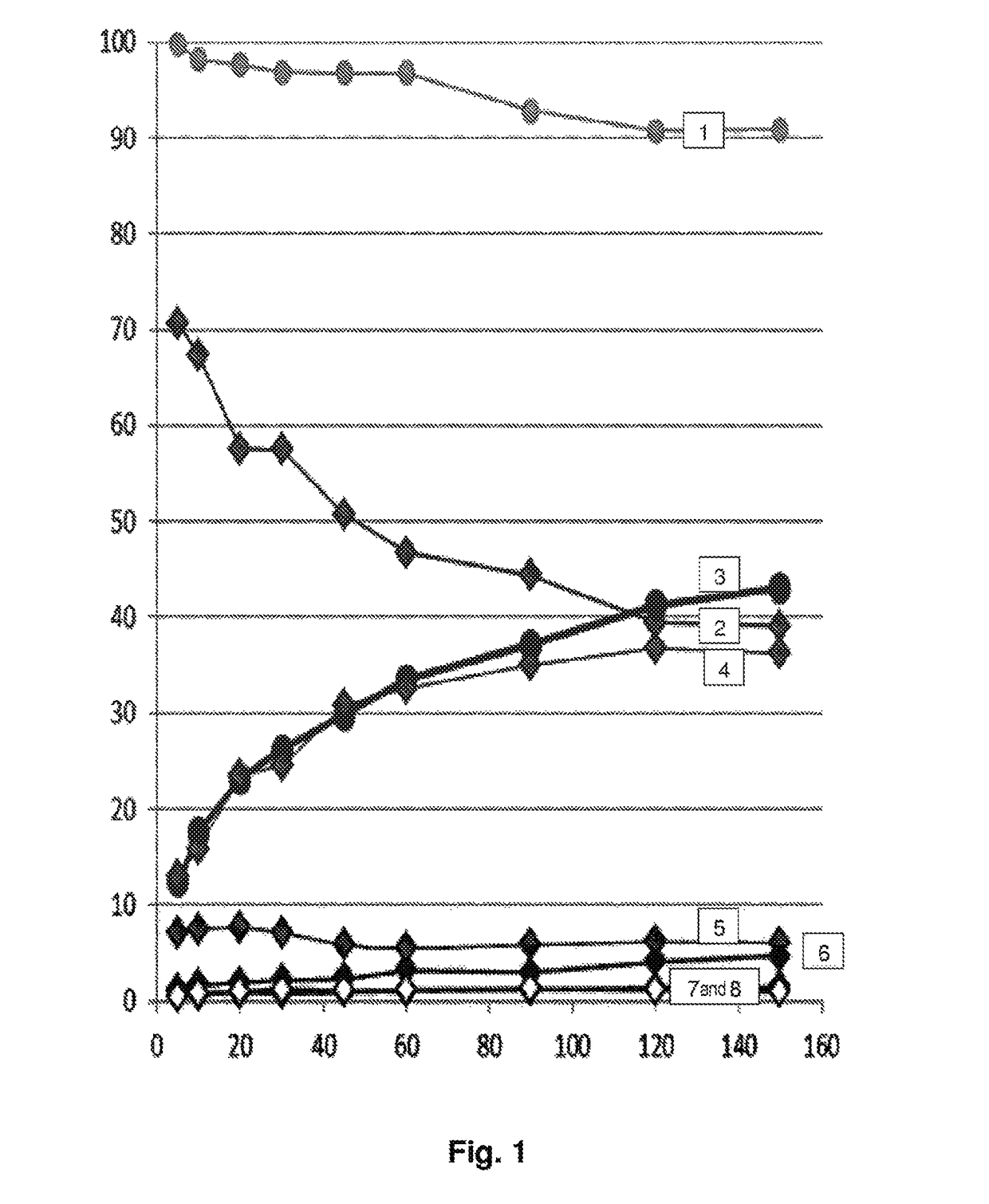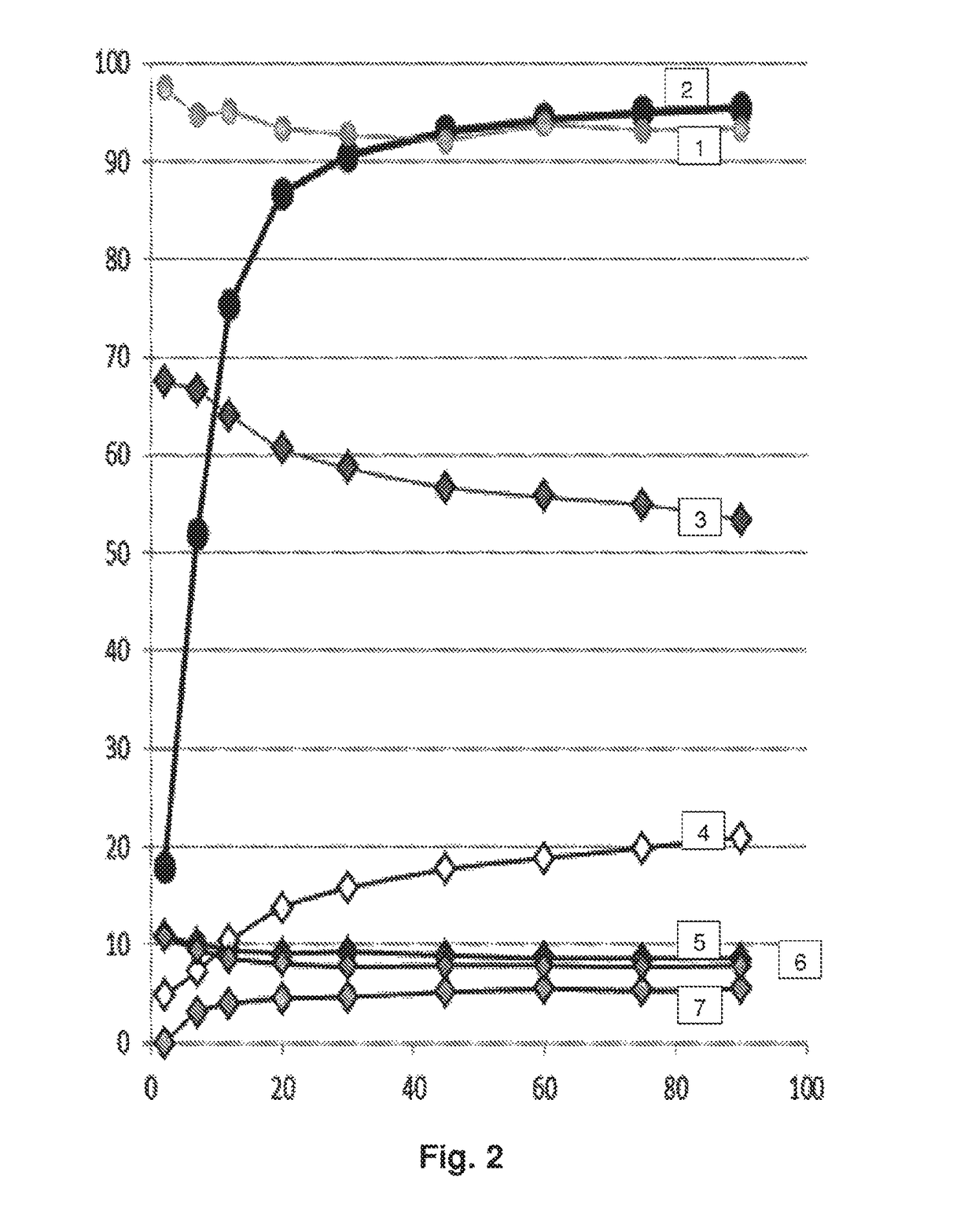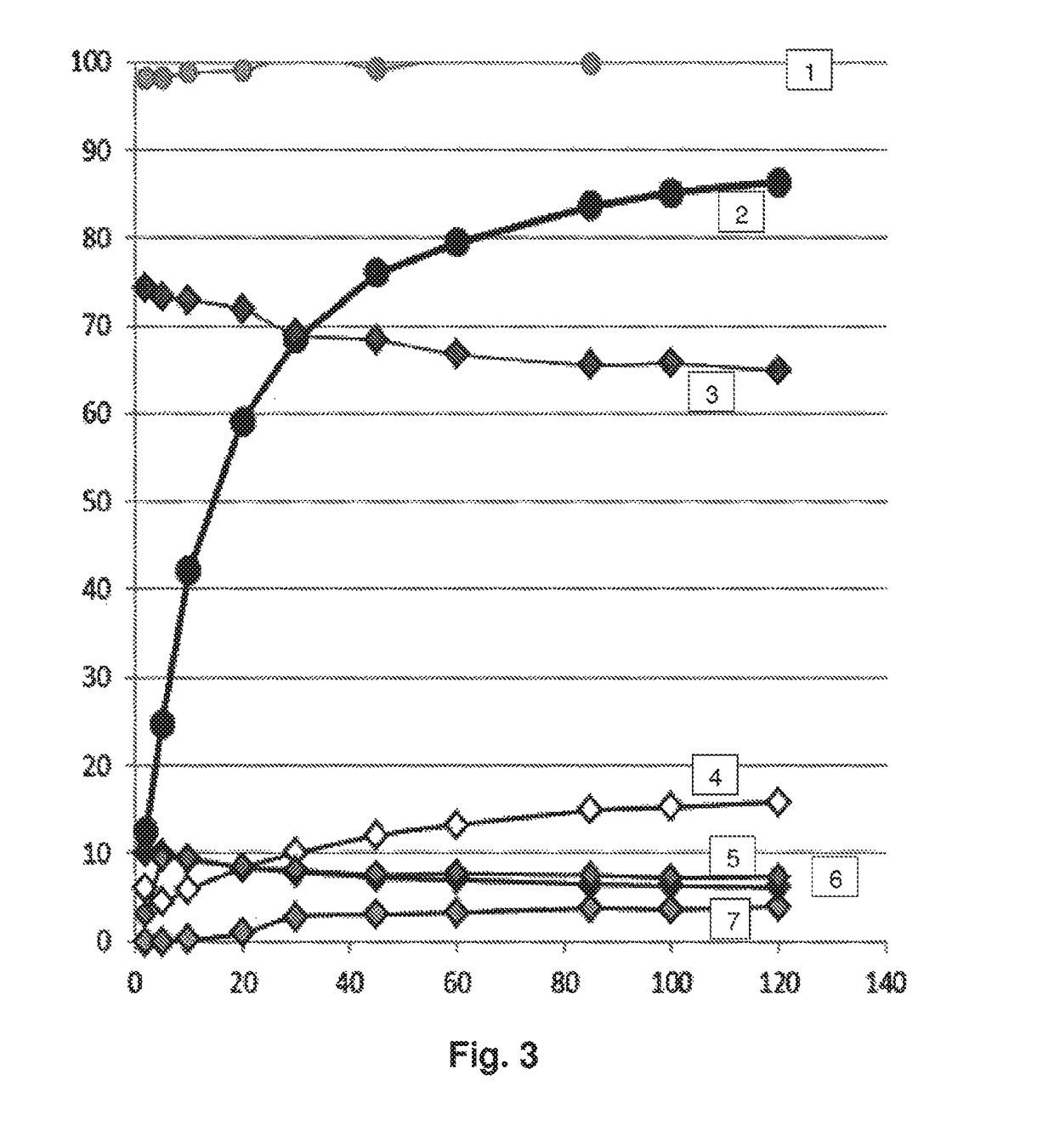Supported metal catalyst and use thereof for selective oxidation of glycerol
a technology of supported metal catalyst and selective oxidation, which is applied in the direction of organic compound preparation, chemistry apparatus and processes, organic chemistry, etc., can solve the problems of increasing not only the production cost, but also the environmental impact of synthesis, and the negative effect of unpurified glycerol on the efficiency of catalysts used to da
- Summary
- Abstract
- Description
- Claims
- Application Information
AI Technical Summary
Benefits of technology
Problems solved by technology
Method used
Image
Examples
example 1
Synthesis of a Support Pt / Sn Bimetal Catalyst
[0073]The supported catalyst is prepared by incipient wetness impregnation of an alumina (15.7271 g) (Merck) with a solution of SnCl2.2H2O (5.3232 g) (Aldrich), followed by drying at 110° C. for 24 h and by calcination under air at 550° C. for 3 h, in order to obtain a support comprising 1.5 mmol of Sn per gram of alumina.
[0074]The support (Sn / alumina) (4.487 g) is immersed in water and brought to reflux for 30 min. 20.809 ml of an aqueous solution of K2PtCl6 salt (0.0164 mol.l−1) are then added dropwise with strong stirring and reduced with NaBH4 (2 mol.l−1). After one hour of stirring and reflux, the solution is cooled to ambient temperature and filtered, and the filter residue is washed with water. Finally, the powder, comprising 1.4 wt % of Pt and 14.9 wt % of tin, is dried at 100° C. for 24 h before being used in the reaction for the oxidation of glycerol.
example 2
Experimental Conditions
[0075]The same conditions were applied for all the catalytic tests presented in examples 3 to 6, namely: an oxygen pressure of 5 bar, a rotational speed of stirring of 1500 rpm, an initial glycerol concentration of 0.3M, an NaOH / glycerol ratio=4 or 0 and, finally, a glycerol / catalyst ratio=11 (g / g). The range of temperatures studied is between 28 and 100° C.
[0076]The experiments for the oxidation of pure glycerol in the liquid phase were carried out in a 300 ml stainless steel reactor equipped with a gas entrainment impeller, with four baffles, with a thermocouple and with a system for feeding with thermally regulated oxygen. In each experiment, 200 ml of an aqueous glycerol solution ([glycerol]=0.3M) are heated to the desired temperature and the reaction begins when the sodium hydroxide solution and / or the catalyst are introduced into the reactor (t0) and when the system is placed under oxygen pressure (5 bar) with continuous stirring (1500 rpm). The amount o...
example 3
Oxidation of Glycerol in the Presence of a Supported Pt / Sn Bimetal Catalyst at 100° C. in the Absence of Base
[0077]The reaction is carried out under the conditions described in example 2 at a temperature of 100° C. and in the absence of base.
[0078]The results are represented in FIG. 1.
[0079]The conversion of glycerol reaches a maximum of 43.1% after 2.5 h of reaction. The predominant products are glyceraldehyde and glyceric acid, with respective yields of 16.8 and 15.6%.
PUM
| Property | Measurement | Unit |
|---|---|---|
| temperature | aaaaa | aaaaa |
| temperature | aaaaa | aaaaa |
| temperature | aaaaa | aaaaa |
Abstract
Description
Claims
Application Information
 Login to View More
Login to View More - R&D
- Intellectual Property
- Life Sciences
- Materials
- Tech Scout
- Unparalleled Data Quality
- Higher Quality Content
- 60% Fewer Hallucinations
Browse by: Latest US Patents, China's latest patents, Technical Efficacy Thesaurus, Application Domain, Technology Topic, Popular Technical Reports.
© 2025 PatSnap. All rights reserved.Legal|Privacy policy|Modern Slavery Act Transparency Statement|Sitemap|About US| Contact US: help@patsnap.com



